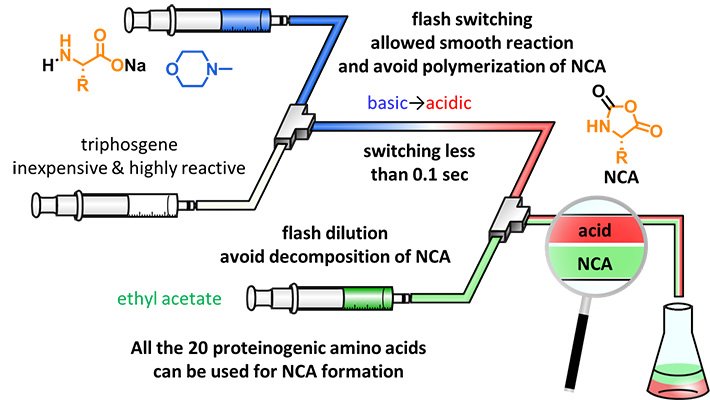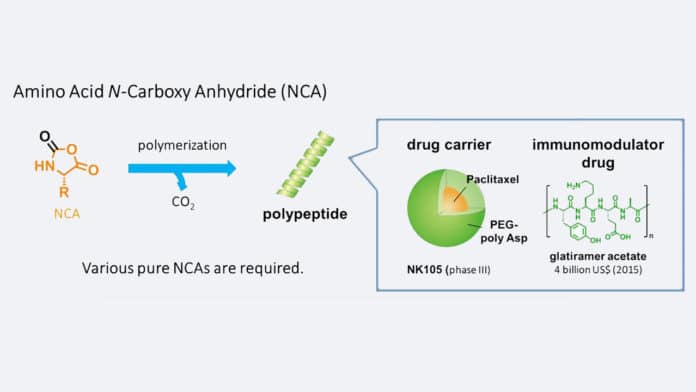The combination of polypeptides has colossal significance in numerous applications, including life-saving medications and drug carriers. Thus, the blend of pure N-carboxy anhydrides (NCAs) is basic for the essential procedure used to plan polypeptides, which is the polymerization (anchoring) of NCAs. In any case, the main practical technique for synthesizing NCAs was built up in 1922, called the Fuchs-Farthing method.
But the drawback of this method that it requires harsh acidic conditions and can cause undesired ring opening in the NCAs produced. It also requires amino acid to be mixed with phosgene to obtain the desired NCAs, along with HCl and CO2, in a slow (two to five hours) but stable fashion with some side reactions, which decrease the purity of the final product.
Even if, NCAs are formed very quickly, the deprotonation of their NH groups causes them to polymerize, making this approach unfeasible.
Thus, scientists at the Tokyo Institute of Technology developed a fast and practical technique using a micro-flow reactor for the synthesis of pure N-carboxy anhydrides (NCAs). They exploited the advantages of carrying out the synthesis under basic conditions and avoided its disadvantages by flash switching to acidic conditions after 0.1 seconds.
This approach enabled them to produce several types of NCAs in a scalable, space-saving, and less time-consuming fashion. Using this method, scientists claimed, they could have the necessary reactions take place in basic conditions first and then quickly change the pH to acidic to prevent undesired polymerization.

Approaches for synthesizing NCAs under acidic conditions (top), basic conditions (bottom), and basic-to-acidic conditions obtained via flash switching (middle). The approach proposed in this work benefits from the advantages of both the other approaches.
Scientists then used a proposed micro-flow technique in order to achieve pH flash switching. They then employed a micro-flow reactor to be able to mix the amino acids with triphosgene in less than 0.1 seconds.
At that point, by too much including triphosgene, the HCl delivered rapidly changes the pH from fundamental to acidic. At long last, to keep the acidic deterioration of acid-abile NCAs, they immediately weakened with ethyl acetic. Utilizing this procedure, the group figured out how to integrate NCAs utilizing all the proteinogenic amino acids and a few corrosive labile nonproteinogenic amino acids.

The proposed micro-flow technique is fast, scalable, and reliable for producing several types of NCAs using micro-flow reactors and flash switching of pH.
Scientists have reported their study in the journal Angewandte Chemie International Edition.
